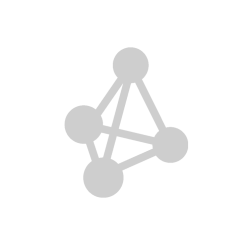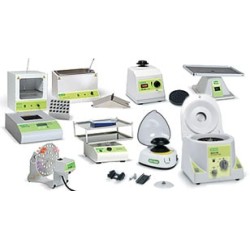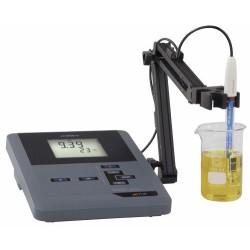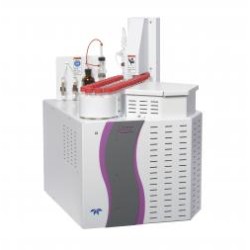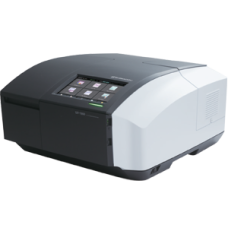UV Visible Spectrophotometers
Product Details :
The UV-1900 is a double-beam UV-Vis spectrophotometer using Shimadzu's original LO-RAY-LIGH™ diffraction grating technology. In addition to its high optical performance, the UV-1900 features high resolution, low stray light, high reproducibility, and an ultra-fast scan function. It also has an easy-to-use interface on a color touch-screen display. The UV-1900 is designed to meet the needs of both high performance and usability.
Hardware Specifications (UV-1900)
Item | Specification |
Wavelength range | 190 to 1,100 nm |
Spectral bandwidth | 1 nm (190 to 1,100 nm) |
Wavelength display | 0.1nm increments |
Wavelength setting | 0.1nm increments (1nm increments when setting scanning range) |
Wavelength accuracy | ± 0.05 nm at D2 peak 656.1 nm, ± 0.3 nm for entire range |
Wavelength repeatability | ± 0.1 nm |
Wavelength slew rate | About 14,500 nm/min |
Wavelength scanning speed | 3,000 to 2 nm/min |
Lamp interchange wavelength | Automatic interchange linked to wavelength. The interchange wavelength can be set freely in the range of 295 to 364 nm (0.1nm increments). |
Stray light | Less than 0.02% at 220 nm (NaI) Less than 0.01% at 340 nm (NaNO2) Less than 0.5% at 198 nm (KCl) |
Photometric system | Double beam optics |
Photometric range | Absorbance: -4 to 4 Abs Transmittance: 0% to 400% |
Photometric accuracy | ± 0.002 Abs at 0.5 Abs ± 0.0025 Abs at 1.0 Abs ± 0.006 Abs at 2.0 Abs (measured using NIST930D/NIST1930 or equivalent.) |
Photometric repeatability | Less than ± 0.0001 Abs at 0.5 Abs Less than ± 0.0001 Abs at 1 Abs Less than ± 0.0005 Abs at 2 Abs |
Item | Specification |
Baseline stability | Less than 0.0003Abs/hr (700 nm, one hour after light source turned ON) |
Baseline flatness | Less than ± 0.0006 Abs (1,100 to 190 nm, one hour after light source turned ON) |
Noise level | Less than 0.00003 Abs (700 nm) |
Light source | 20-W halogen lamp and deuterium lamp Built-in light source auto position adjustment |
Monochromator | LO-RAY-LIGH grade blazed holographic grating in Czerny-Turner mounting |
Detector | Silicon photodiode |
Sample compartment | Internal dimensions: W110 × D250 × H115 mm Distance between light beams: 100 mm |
Power requirements | AC100,120,220,230,240 V, 50/60 Hz, 140 VA |
Environmental requirements | Temperature: 15°C to 35°C Humidity: 30% to 80% (without condensation; 70% max. at 30°C or higher) |
Dimensions | W450 × D501 × H244 mm |
Weight | 16.6 kg |
Output device | USB memory (optional) |
Data files saved in text format or UVPC format. UVPC-format files can be read directly by UVProbe and LabSolutionsTM UV-Vis. |
PC compatibility | UVProbe software (standard) LabSolutions UV-Vis software (optional) External control possible via USB. |
Display | 24-bit color touch screen |
Supported languages | Japanese, English, Chinese, Spanish (Mexico), Portuguese (Brazil). |
UV-1900 Software Specifications
Measurement mode | Specification |
Photometric mode | Single-wavelength measurement- Photometric modes: T% or Abs
- Quantitation using K-factor method
- Data table storage and recall functions
Multiple-wavelength measurement- Photometric modes: T% or ABS
- Measurements at up to eight designated wavelengths (set in 0.1mm increments)
- Data calculation at up to four wavelengths (difference or ratio between two wavelengths, calculation between three wavelength, etc.) is possible.
|
Spectrum mode | - Measurement modes: ABS, T%, E
- Number of repeat scans: 1 to 99
- Recording system: Selection between single spectrum and data overlay 4.Data storage and recall 5.Data processing: Peak/valley detection, arithmetic operations, differentiation, smoothing, area calculation, point picking, data reading at cursor-specified point
|
Quantitation mode | - Measurement methods:
- wavelength,
- wavelength,
- wavelength,
- and 1st to 4th derivative methods
- Quantitation methods: Automatic concentration calculation using K-factor Automatic concentration calculation using single-point calibration curve Multi-point calibration curve method (1st to 3rd order regression curves)
- Measurement parameters: Number of standards (2 to 10) Number of repeat measurements (1 to 10 times) to obtain a mean value for quantitation.
|
Kinetics mode | - Measures absorbance changes as a function of time and calculates the enzymatic activity values.
- Measurement time: 1 to 9,999 sec/min
- Measurement methods:
- wavelength,
- wavelength, multi-cell, and rate measurements
|
Time scan mode | - Measures changes in measured values as a function of time.
- Measurement mode: ABS, T%, E
- Measurement time: 1 to 9,999 sec/min
- Data processing functions (same as spectrum mode)
|
Measurement mode | Specification |
Biomethod mode | DNA/Protein Quantitation- Calculation of DNA/protein concentration and absorbance ratio DNA concentration = K1 x A1 - K2 x A2 Protein concentration = K3 x A2 - K4 x A1
- Factors and measurement wavelengths can be set freely.
- Background correction is possible.
Quantitation of proteins- Quantitation methods: Lowry method, BCA method, Biuret method, CBB method (Bradford method), UV method
|
Maintenance | - Baseline correction
- Lamp usage time displays and reset
- Security settings Functions can be restricted according to the user.
- Instrument validation functions:
- Compatible with 9 JIS items Wavelength accuracy, wavelength repeatability, resolution, stray light, photometric accuracy, photometric repeatability, baseline flatness, baseline stability, noise level.
- Semi-automatic validation Validation inspections conducted interactively while inserting and removing inspection jigs.
- Fully automatic validation Automatic validation inspections from measurement to evaluation and printout.
- Setting inspection parameters and pass/fail criteria Authority to make changes can be protected by password access.
- Detailed printout of results
- Bulk printout of results
|
Shared functions | - Automatic setting of measurement mode after instrument initialization. It’s possible to specify standby and parameter files in the parameter setting window for each measurement mode.
- Selection of the displayed number of decimal places Absorbance: 3 or 4 decimal places Transmittance: 1 or 2 decimal places
- Number of files that can be saved (built-in memory) Measurement parameters: 24 files max. Data: 8 files max. Tabular data: 8 files max.
- The setting of integration time (for fixed-wavelength measurement)
- PC control Spectrophotometer can be controlled by an external PC. This function is also used when performing the operation with the UVProbe software provided. *A USB cable is required.
|



